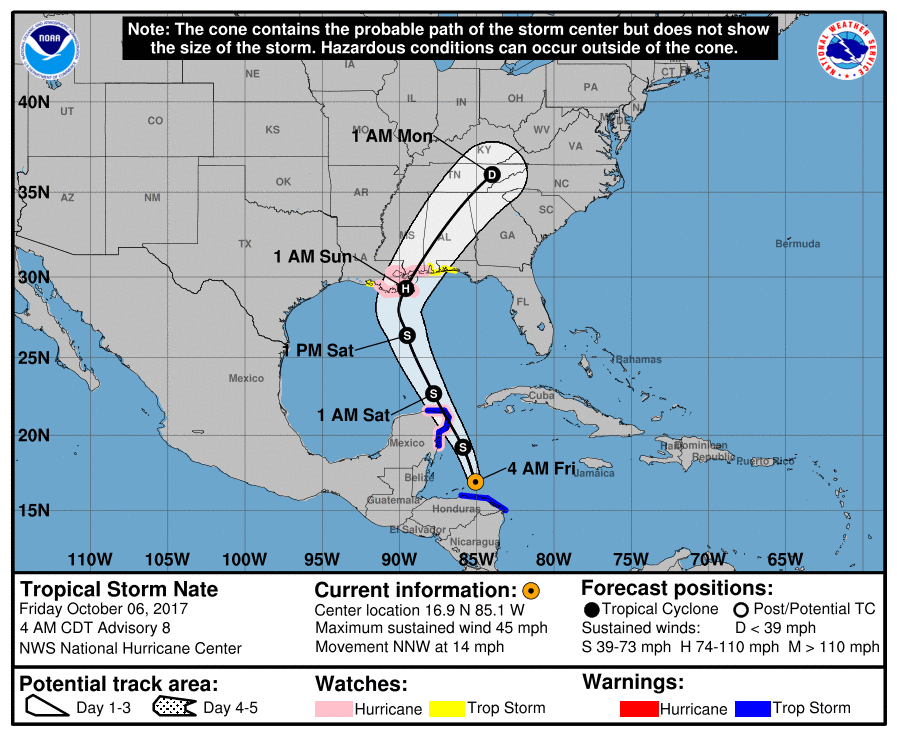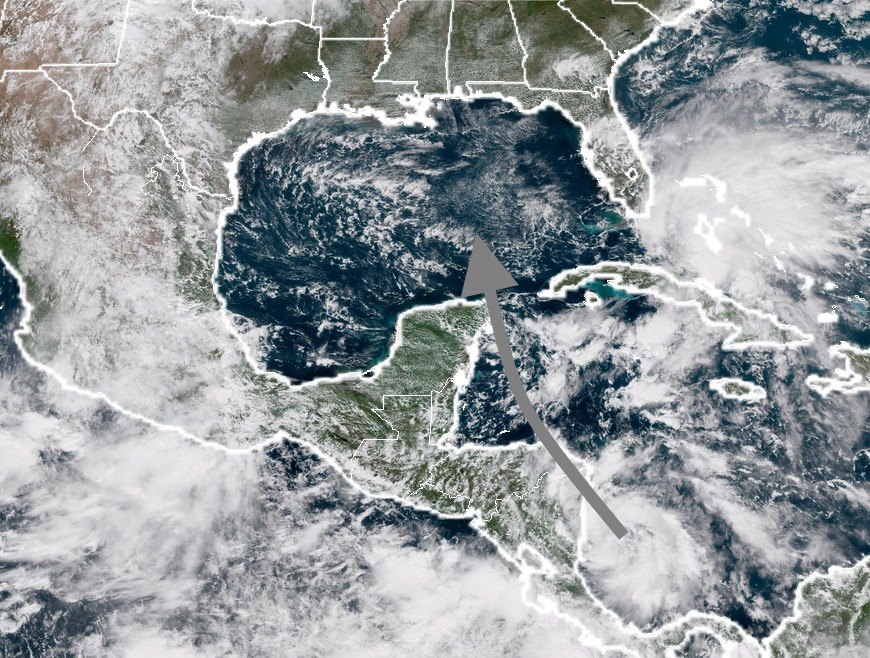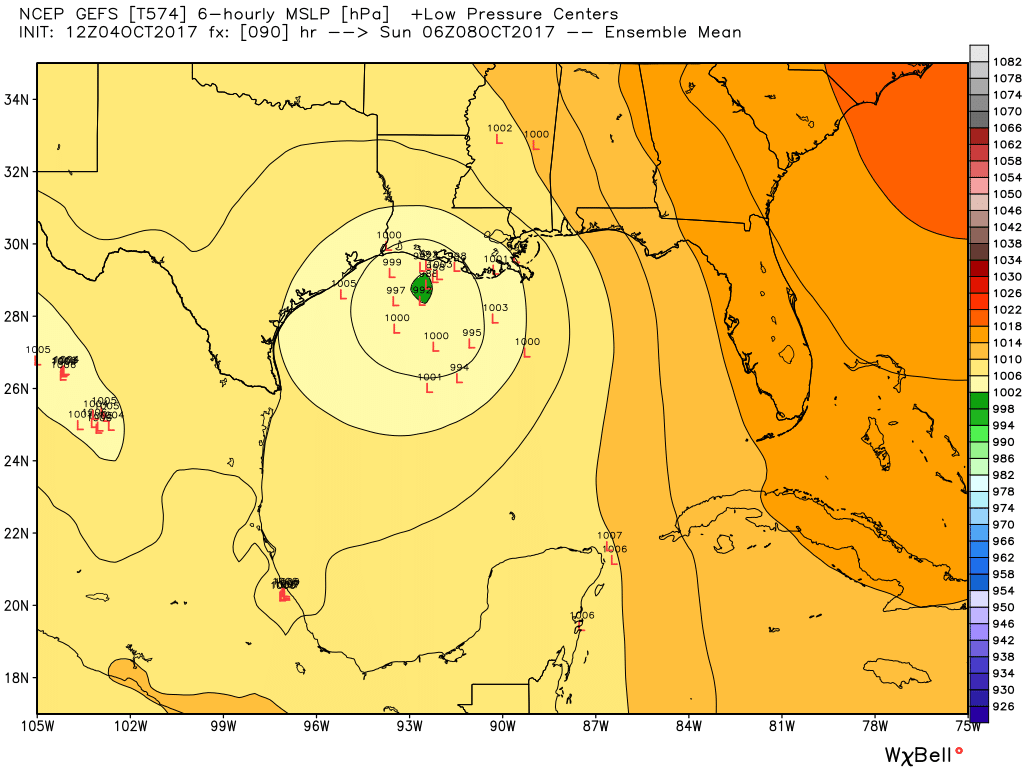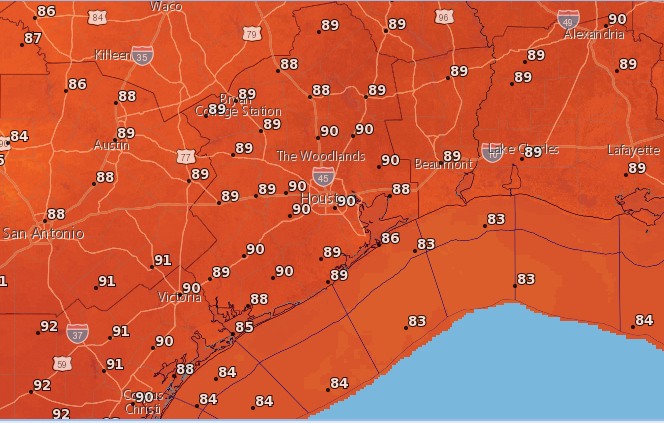Houston remains in a warm pattern that’s going to persist for a few more days before some kind of cold front is likely to drag through the area next week. We may also see some showers related to Tropical Storm Nate this weekend, but nothing we should be too concerned about.
Friday
Mostly sunny and hot, with highs in the upper 80s. Not much to say about today, other than it’s going to be a typical, late-summer day for Houston.
Saturday & Nate
Tropical Storm Nate should emerge into the Gulf of Mexico early on Saturday morning and move north fairly rapidly, likely reaching the northern Gulf of Mexico coast by very early on Sunday morning. The high-confidence forecast track from the National Hurricane Center looks like this:

Along such a track, Houston may see some precipitation from the outer bands of the storm, but this is nothing we’re too concerned about. Likely, it won’t rain for most people, and accumulations seem unlikely to be more than 1 inch for those that do see rain—if that much. Nate should also keep tide levels higher than normal for the next day or two along the upper Texas coast.




